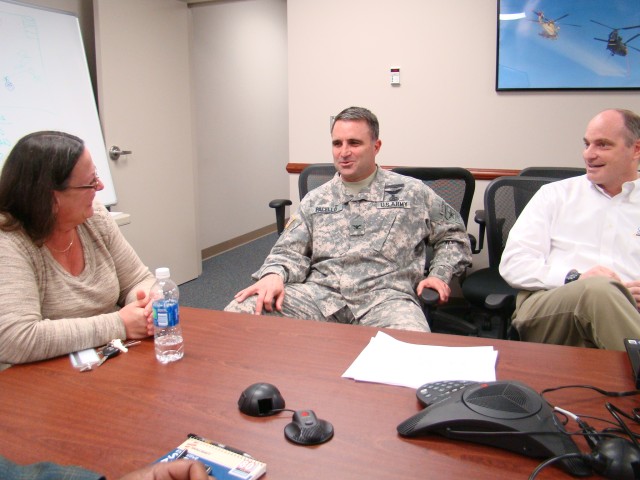
REDSTONE ARSENAL, Ala. -- Operating in deconflicted airspace and having a joint air picture of all low-level flying activity is as critical as the missions the military conducts every day.
For years, various military services have worked on programs and processes to improve situational awareness of flying assets in crowded airspace. While they addressed some problems, it was clear that improvements needed to be made in the joint operational picture.
In January, Central Command and Joint Forces Command endorsed the Army's nomination to sponsor the Aviation Low Level Friendly Identification and Networked Distribution, or ALLFIND, program as a candidate for joint test to address the critical information need of deconflicting airspace at low altitudes.
ALLFIND focuses on the development of enhanced joint concept of operations and tactics, techniques and procedures and leverage existing and soon-to-be-fielded advanced identify friend or foe digital-messaging capabilities.
Col. Scott Pacello, director of ALLFIND, recently returned from Iraq and Afghanistan and spoke with Soldiers and commanders to validate the problem statement issued by the Army.
"We received initial feedback from the users. It was very positive," Pacello said. "They all think this is a good thing we are trying to do and are excited to see what we can come up with."
"There are many assets flying around at any given time in a very crowded airspace. What we're doing is seeking ways to improve situational awareness by looking into existing and future technologies, consolidating and coordinating TTPs, to improve situational awareness for the joint force commander."
The new ALLFIND team consisting of approximately 12 people, includes a director, selected by the Program Executive Office for Aviation, a deputy and a technical director and is headquartered on Redstone Arsenal as part of PEO for Aviation.
The purpose of the Joint Test and Evaluation Program is to provide quantitative operational test and evaluation information used for analyzing joint military capabilities and develop potential options for increasing military effectiveness. JT&E, under which ALLFIND is funded, focuses on providing improvements in TTPs, not presenting the Soldier with a new piece of equipment.
"We had to explain to the commanders and Soldiers that this is not another gadget we are trying to give them but rather an improvement in tactics, techniques and procedures in deconflicting airspace," Pacello said. "They realized that ALLFIND is an opportunity to enhance situational awareness to a crowded airspace."
This non-acquisition program started as a vision approximately two years ago. "It is not a purchase of any weapons or systems but rather an understanding, exploration and ultimately a 'handbook' in changing and improving existing processes," Pacello said.
His visit to both theaters has proven to be successful and worthwhile. "We received letters of endorsement from the units we saw," he said.
All services operate in and through this battle space. "All service decision makers would benefit from increased situational awareness and decreased uncertainty," Pacello said.
A Joint Warfighter Advisory Group will convene in June to provide the operational input. "They will provide the checks and balances for us," Pacello said. "ALLFIND will examine the pros and cons of existing programs, leverage opportunities presented and gain from lessons learned."
"This project also requires a team effort from the Redstone community. In order for us to have been able to proceed, organizations such as AMCOM, AMRDEC, RTC and ATEC, and of course PEO Aviation had to endorse it.
"We have an outstanding contractor support team that is critical to the success of the ALLFIND program," Pacello added.
"There are so many stakeholders involved," Bill Colson, deputy director of ALLFIND, said. "Trying to synchronize all the stakeholders is a major and complex process."
The biggest challenge facing the directorate now is time. An aggressive schedule has been laid out to build the plan in order for it to be tested.
"A technical advisory board already met in April," Pacello said. There will be another one in July. These board advisories serve as technical reviewers from each of the military services.
ALLFIND is in the joint feasibility process, a seven-month period where the team conducts research and creates a plan to show the JT&E that they have an executable test. "Of the three programs selected for JFS, two will be selected at the end of the year for a full blown two-to-three-year joint test program to test the executability of the plan," Pacello said.
"What we're really doing is an operational assessment of the plan right now," he said. "It will culminate into a major test exercise which will be a combination of small tests which will grow into large scale exercises to prove the validity of the plan."

Social Sharing